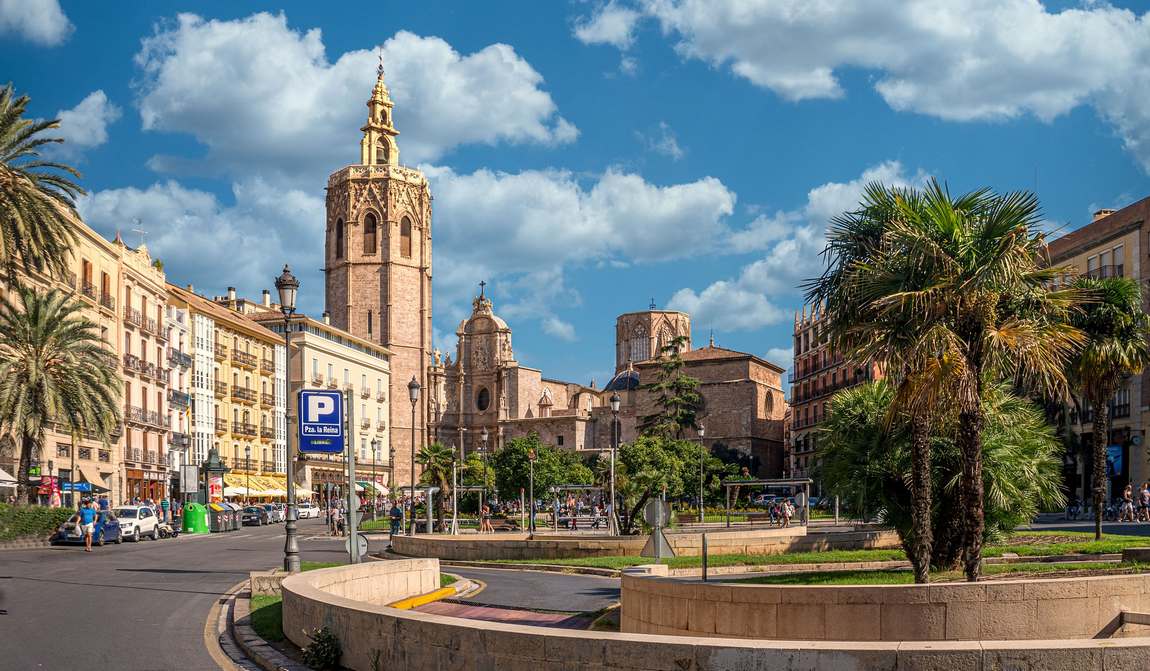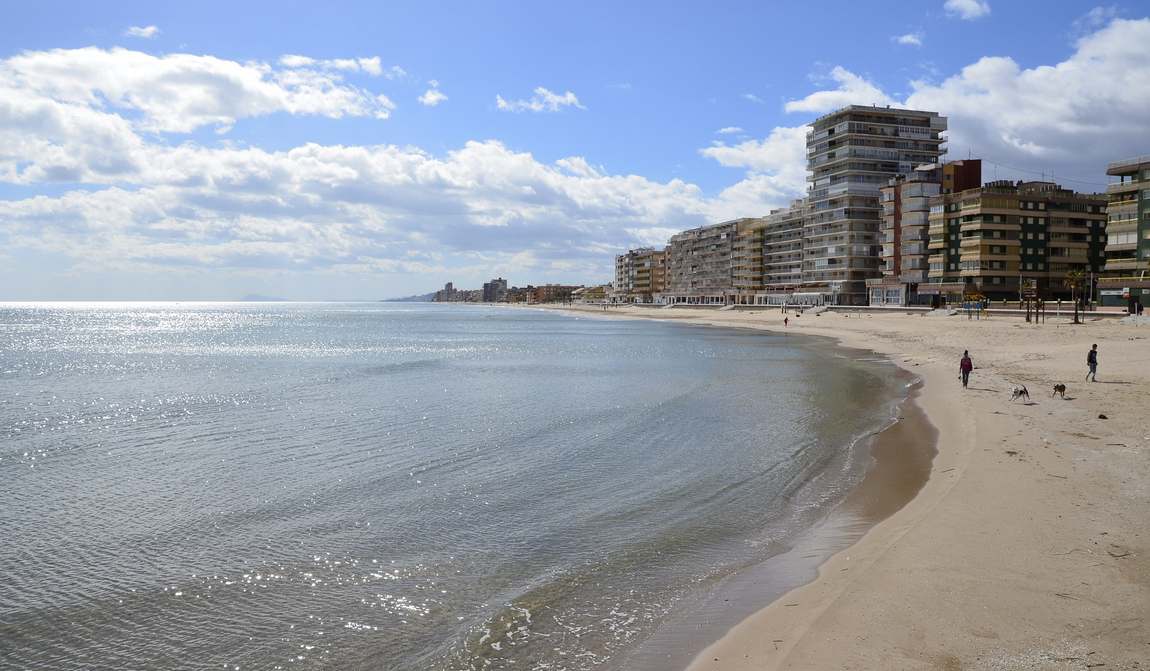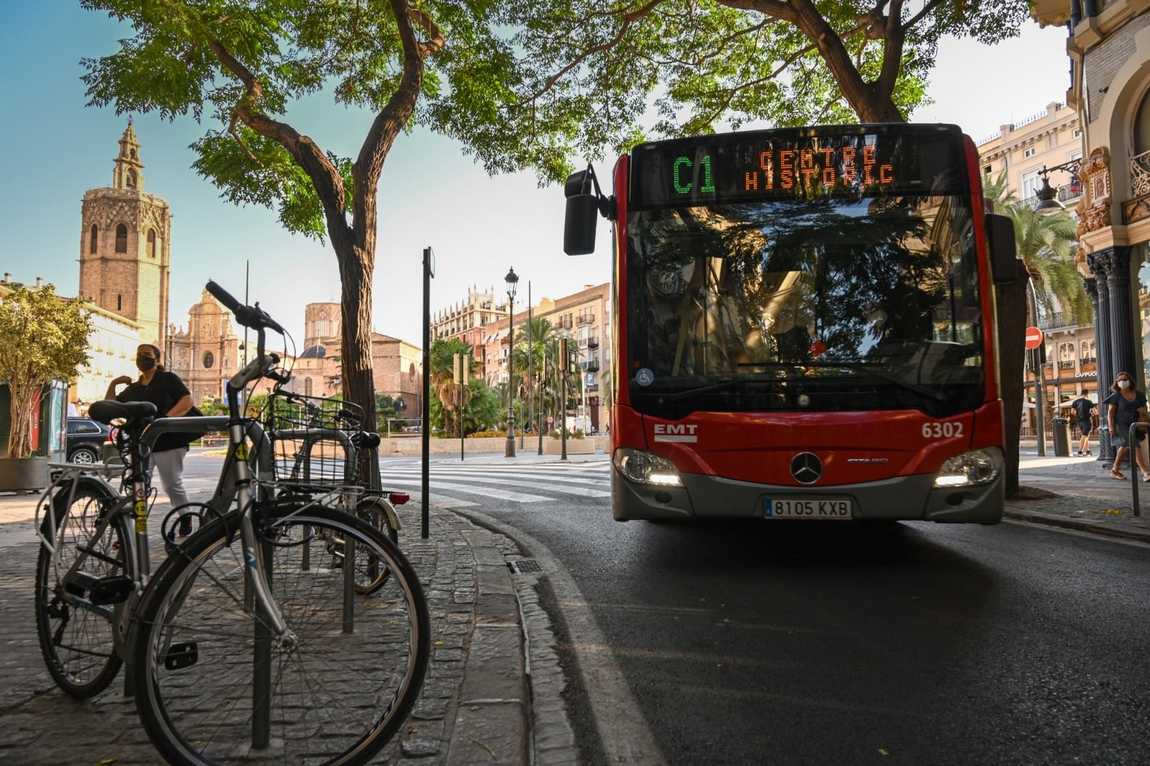Do you want to ensure that a big city is not necessarily bustling? That 800,000 local people and tens of thousands of tourists don't get in the way of the Mediterranean sun? That ripe orange can be picked off the streets?
Then go on a family holiday in Valencia. Families with children are looking for some quiet after Madrid or Barcelona and some entertainment after the sleepy spas of the Costa Blanca. Finally, there's an extraterrestrial town, a visit to which can lead to improved academic results for schoolchildren. Yes, that's the resort of Valencia — "paradise on earth", as the Moors called it a thousand years ago. Paradise may be imagined in different ways, but tourists agree on one thing: a trip to Valencia is an experience that will last a lifetime.
In this guide, we'll tell you the secrets of a holiday with kids in Valencia: what museums to visit, what to do during the warm and cold seasons, what beaches to visit and what to try of the unique local sweets.
Valencia on the map of Spain
The city of Valencia is a resort in eastern Spain on the Mediterranean coast and is the administrative centre of the province and autonomous community of Valencia. The town is 350 km from Madrid and Barcelona, 140 km from Benidorm, 166 km from Alicante and 216 km from Torrevieja. Settlements of the Greeks, the Carthaginians and the Romans have been on the coast where Valencia is located for ages. The city was named Valentia two thousand years ago, meaning 'strength', 'fortress' and 'good omen'.
Ancient Valencia flourished until the 8th century when it was conquered by the Visigoths, who devastated many Roman towns. For centuries, the city was fought over by Muslims and Christians; it passed from hand to hand until the Kingdom of Valencia finally became part of the Aragonese Crown. Despite the subsequent alterations, Valencia has remained part of Spain and has retained its language.
Valencia for Kids

A trip to Valencia is good to anticipate. It's good to imagine the sun over Roman Valencia, the orange trees, and the blue sea. See baroque palaces with intricate décor come to life. To dream of landing (how else could you get there?) in the futuristic white-washed buildings of the City of Arts and Sciences. Holidays in Valencia are most often planned for the summer to relax on the beaches and visit the excursions. It's a rare combination — Valencia's beaches really are as good as its museums.
There are just two things to consider:
- The city centre is far from the coast, and buses will have to be taken to the sea;
- Most museums in Valencia are closed during peak hours, between 2pm and 5pm.
Siesta does take some getting used to. Many shops and restaurants are closed during this time - try to relax with your child in a cool hotel room so you can go out again in the evening. By the way, it's not only the summer that brings children to Valencia. Any school holidays are fine for a family trip, especially as a beach holiday is usually not the primary purpose of the journey, and the summer heat is not the best weather for excursions.
Valencia for children is all about unusual museums, active entertainment and discoveries. A lively city makes for an energetic and action-packed holiday.
But is it possible to rest in such conditions with an infant? Feedback from travellers unequivocally says you can. There are ramps and places for prams in transport, high chairs for toddlers, and play corners for pre-schoolers in restaurants, parks for walks in the city, playgrounds on the beaches, and endless racks of baby food in the supermarkets. The only thing missing is silence on the beaches. For a secluded holiday by the sea, it's better to stay in one of the smaller resorts on the Costa Blanca.
Best time to travel

The tourist season in Valencia is a relative term. There are months when tourists are in high numbers, but there is hardly a week or two when no holidaymakers are in the city. March is considered to be the opening season in Valencia, and this is only because early spring is already warm and green enough to encourage travellers to explore the city and the surrounding natural parks.
Summer or early autumn is usually the beach season for a holiday with children in Valencia.
Just before you get bored of the quietness of the Costa Blanca resorts, the best children's museums and entertainment in the big city are at your disposal. All the season's delights are complemented by colourful fireworks on St. Juan's Day or a flower show, but the other months are also an excellent time to visit the city. There's the wonderful Christmas season, the winter carnival in February and the Fallas de Valencia in March, when giant papier-mâché sculptures are wheeled through the streets.
There is another answer to the question of when to go to Valencia. The bullfighting season opens after the Fallas. Bullfighting lasts until October, with the main events taking place in July.
Weather and Climate
Spain's three biggest cities — Madrid, Barcelona and Valencia — vie for the right to be considered the sunniest city in the country. However, the sun shines in the Valencian sky at least 300 days a year.
Valencia has a subtropical Mediterranean climate, which means it's warm in winter and hot in summer. Humidity is high, but rainfall is infrequent, falling mainly in spring and autumn.
Summers in Valencia are long. The temperature is already +23oC in May, and the heat can only increase from here. The milder temperatures and lack of heat will help the infant quickly acclimate to the weather — the real heat starts in June, with highs of +28ºC during the day. In July and August, the air heats up to +30-35°C. It's only refreshing in the evening, with nighttime summer temperatures of +20-23°C.
In Valencia, postponing your holiday to the first half of autumn is best to avoid the heat. The heat sinks, but the resort is still warm. Temperatures are around +27-29°C in September and +23-24°C in October. However, the nights are getting pretty cold: even in September, the temperature can drop to +17°C.
September and October have the perfect combination of air and water temperatures. It's no longer hot, and the sea is still very warm. Therefore, the best holiday in Valencia with children is in early autumn.
From the second half of October, Valencia experiences a rainy and cold autumn and winter. Winter temperatures of +10°C are considered low. Daytime January-February temperatures are generally around +15-16°C, and nighttime temperatures are around +8°C. It is not a popular time for holidays with children, although the clear and mostly windless weather is suitable for walks and excursions.
In spring, the air in Valencia isn't just warm — it's filled with orange blossoms. When it's +18-20°C outside, and the city is scented, it's time to hit the botanical gardens or the Biopark. Just bring an umbrella — March doesn't skimp on the rain.
Sea Temperature

Despite the lack of frost in Valencia, the sea off the resort's coast cools down over the winter. In December and February, the water temperature is only +15-16°C, and with the arrival of spring, the sea is slow to warm up. Temperatures rise to +18°C in May and +21-22°C in June before finally reaching +24°C at the beginning of July.
The best time for a beach holiday in Valencia is from late June to the end of September. Water temperatures do not drop below +24-26°C during this period.
In October, the sea off the coast of Valencia is still quite warm, around +22°C, but the water is gradually beginning to cool down. Already in November, it's cold to swim, with temperatures dropping to +19°C.
Food

Valencia hotels usually leave food out of the room rate and sometimes only offer breakfast. In the cuisine of Spain, this makes sense: rather than limiting yourself to the average European meal, try the local dishes.
A masterpiece of Valencian cuisine, the paella, a rice dish with meat and seafood cooked in a special pan. The 'fideua' dish is also recommended.
On a hot day, Valencians quench their thirst with Orchata de Chufa. It is made from ground almonds. The city's oldest orchateria, El Siglo, serves a long farton bun to accompany the chilled orchata. The popular cold dessert, llet merengada, is made with milk, sugar, cinnamon and whipped egg whites.
If you visit over Christmas, the children will devour turrons, delicate bars made with egg whites, honey and roasted nuts. Other delicacies in Valencia include the bunyols, served with hot chocolate. However, the cuisine in Valencia has no cereals apart from rice, hardly any soups and minimal dairy products. Even in the supermarkets, you will only sometimes find grains, and dairy products are usually milk and yoghurt.
Getting Around

Valencia's public transport system is simple and very convenient: 5 metro lines, including trams, and 46 bus routes make it possible to get to every tourist attraction or the sea. To plan your way around the city, use the route planner on the website of EMT, the city's bus company. You can also check bus timetables there.
The city is divided into zones, and the ticket's cost depends on the number of zones it covers.
Most attractions are concentrated in Zone A, and travel within this zone costs €1.50. A ticket covering almost the entire city (AB zones) costs €2.10.
A trip to the suburbs (ABC) will cost around €3. You do not need to buy a ticket for children under five; from age 6, you must purchase a full ticket. You can buy tickets for one or all modes of transport, for one trip or several trips. For example, the Bono Travel Card (10 rides on all means of transportation in area A) costs €9, and the T1, T2, and T3 pass (unlimited rides on public transport in area A) costs €4 for one day about €7 for two days and about €10 for three days.
The Valencia Tourist Card (VTC) is a great help for the many tourists who travel a lot. It allows you to travel for free on Valencia's public transport services, including to and from the airport, and to receive discounts in museums, some restaurants and shops.
A VTC with a validity of 24 hours costs €15, 48 hours €20, 72 hours €25. The card can be purchased at the airport or online (in which case it is 10-15% cheaper).
The card for children aged 6 to 12 years costs slightly less than the adult card, but only if purchased online. Taxis are an excellent way to get around Valencia. Taxis cost just over €1 for each kilometre travelled plus €4 for boarding. At night, at weekends and on public holidays, the fares increase. Taxis are waiting for passengers in the car parks, and you can also hail a car by phone.
 [email protected]
[email protected]






.jpg)


.jpg)


.jpg)
.jpg)








